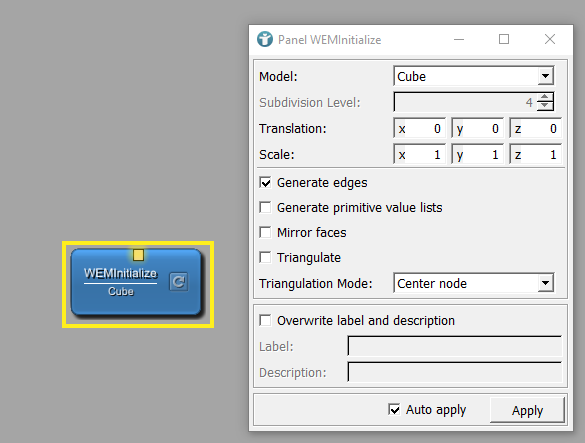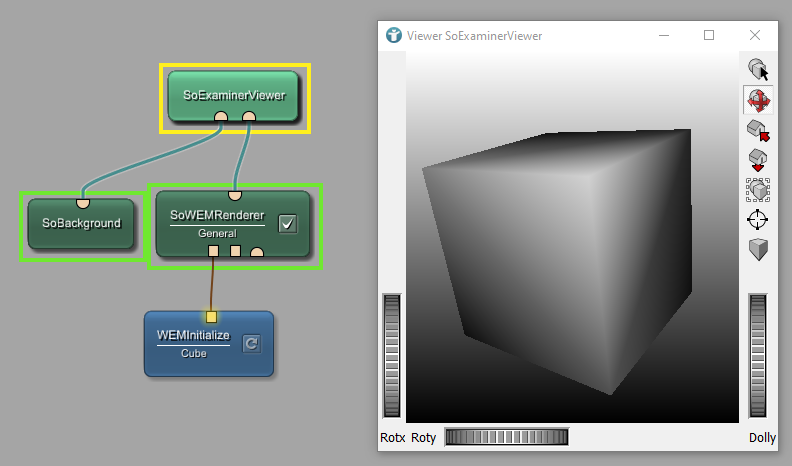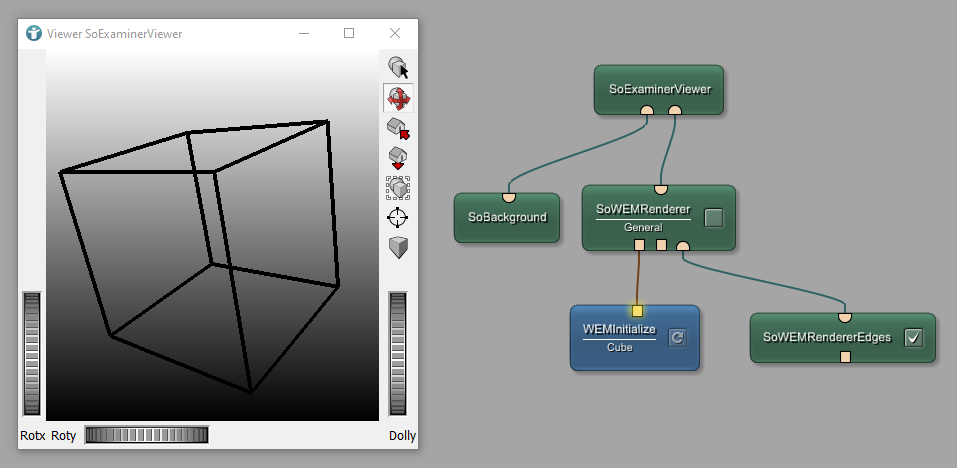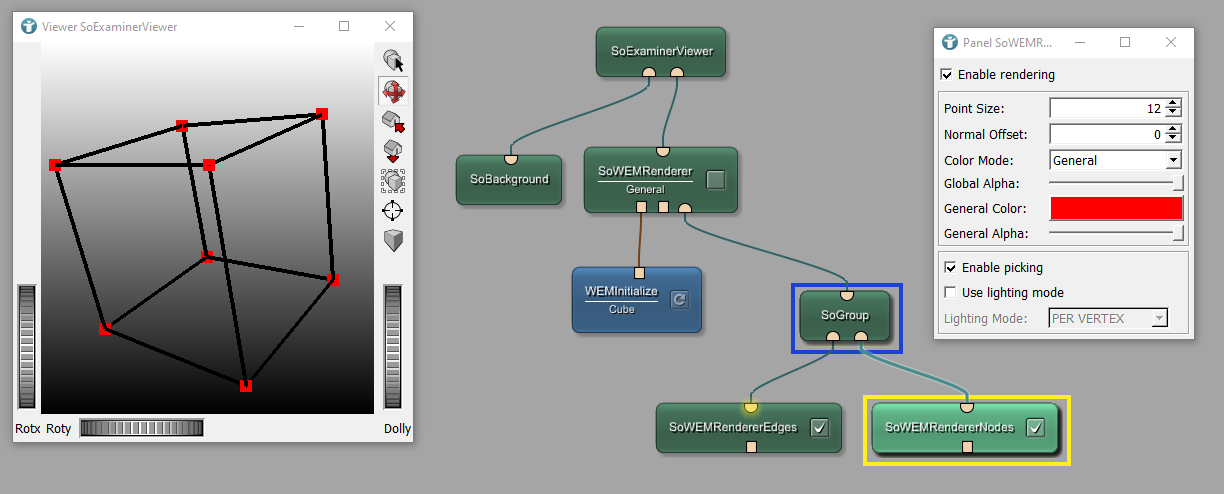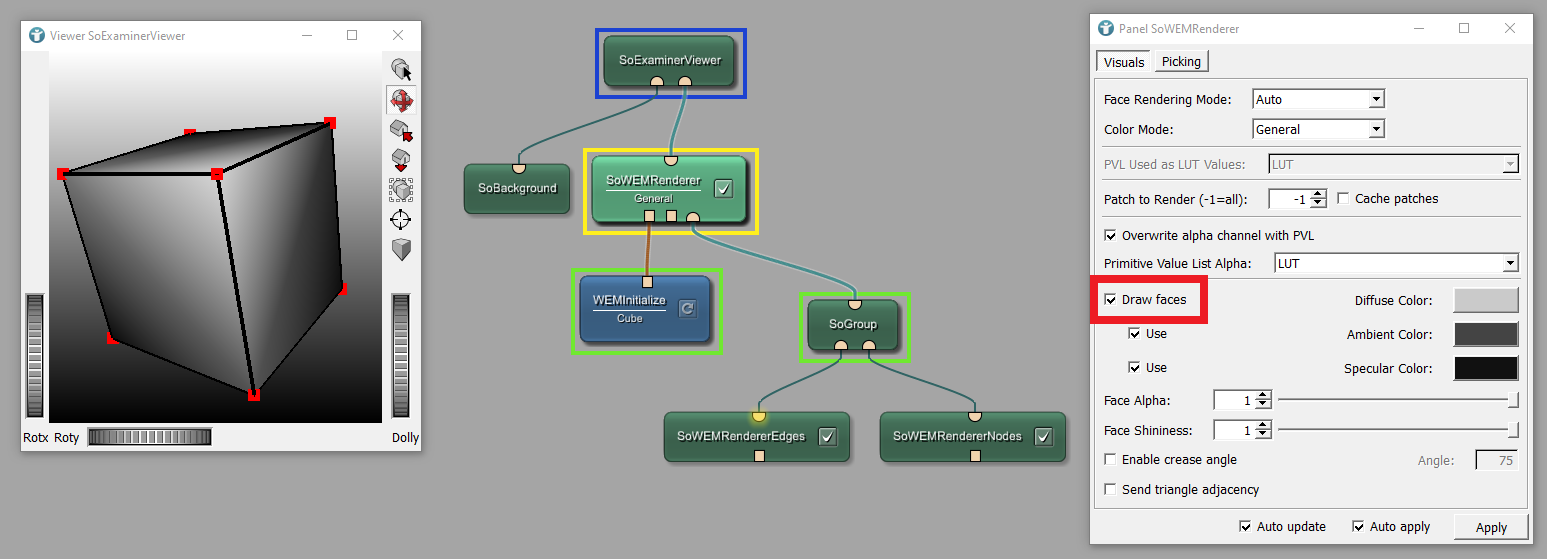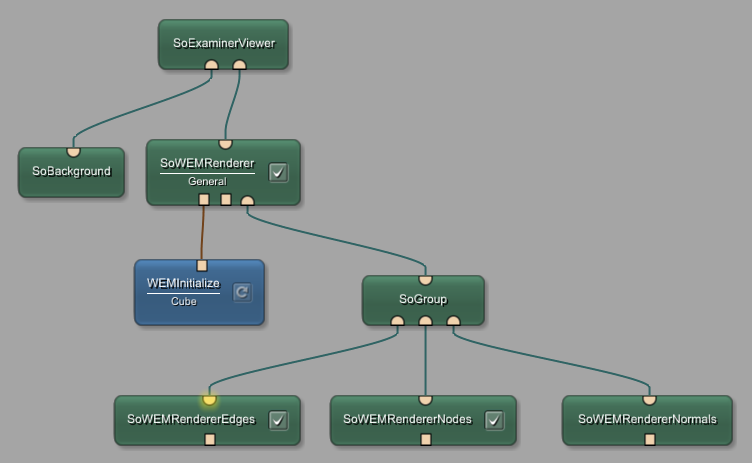Surface Objects (WEMs)
Introduction
In MeVisLab it is possible to create, visualize, process and manipulate surface objects, also known as polygon meshes. Here, we call surface objects Winged Edge Mesh, in short WEM. In this chapter you will get an introduction into WEMs. In addition, you will find examples on how to work with WEMs. For more information on WEMs take a look at the MeVislab Toolbox Reference . If you like to know which WEM formats can be imported into MeVisLab, take a look at the assimp documentation here.
WEM explained with MeVisLab
To explain WEMs in MeVisLab we will build a network, which shows the structure and the characteristics of WEMs. We will start the example by generating a WEM forming a cube. With this, we will explain structures of WEMs called Edges, Nodes, Surfaces, and Normals.
Initialize a WEM
Add the module WEMInitialize to your workspace, open its panel and select a Cube. In general, a WEM is made up of surfaces. Here all surfaces are squares. In MeVisLab it is common to build WEMs out of triangles.
Rendering of WEMs
For rendering WEMs, you can use the module SoWEMRenderer in combination with the viewer SoExaminerViewer. Add both modules to your network and connect them as shown. A background is always a nice feature to have.
Geometry of WEMs
The geometry of WEMs is given by different structures. Using specialized WEM-Renderer modules, all structures can be visualized.
Edges
Add and connect the module SoWEMRendererEdges to your workspace to enable the rendering of WEM Edges. Here, we manipulated the line thickness, to make the lines of the edges thicker.
Nodes
Nodes mark the corner points of each surface. Therefore, nodes define the geometric properties of every WEM. To visualize the nodes, add and connect the module SoWEMRendererNodes as shown. Per default, the nodes are visualized with an offset to the position they are located in. We reduced the offset to be zero, increased the point size and changed the color.
Faces
Between the nodes and alongside the edges surfaces are created. The rendering of these surfaces can be enabled and disabled using the panel of SoWEMRenderer.
Normals
Normals display the orthogonal vector either to the faces (Face Normals) or to the nodes (Nodes Normals). With the help of the module SoWEMRendererNormals these structures can be visualized.
WEMs in MeVisLab
In MeVisLab WEMs can consist of triangles, squares or other polygons. Most common in MeVisLab are surfaces composed of triangles, as shown in the following example. With the help of the module WEMLoad existing WEMs can be loaded into the network.
Summary
- WEMs are polygon meshes, in most cases composed of triangles
- WEM’s geometry is determined by nodes, edges, faces and normals, which can be visualized using renderer modules



